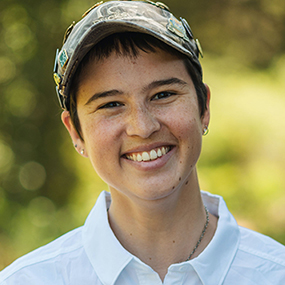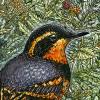

Join BirdNote tomorrow, November 30th!
Illustrator David Sibley and actor H. Jon Benjamin will face off in the bird illustration battle of the century during BirdNote's Year-end Celebration and Auction!
Many shorebirds breed in the Arctic tundra. It’s such an important ecosystem that every year, the National Oceanic and Atmospheric Administration issues an Arctic Report Card that details how the region has been affected by rising global temperatures. Over the last ten years, satellite data has shown that shrubs are spreading in the north. Shorebirds that nest among low-lying tundra plants may soon find woody thickets encroaching on their breeding grounds, which could have ripple effects on shorebird populations around the world.
BirdNote®
The Arctic Report Card
Written by Ariana Remmel
This is BirdNote.
[Ruddy Turnstone calls, ML 516982]
You can find these calico-colored Ruddy Turnstones foraging for crustaceans across six continents in the winter. But when it’s time to breed, turnstones and many other shorebirds high-tail it to the Arctic tundra.
It’s such a unique and important ecosystem that every year, the National Oceanic and Atmospheric Administration issues an Arctic Report Card that details how the region has been affected by rising global temperatures. One of the biggest changes can be seen from space.
JJ Frost: The tundra is becoming shrubbier. Shrubs are becoming more abundant, they're becoming denser, they're colonizing new areas.
That’s landscape ecologist JJ Frost, who studies this phenomenon, called tundra greening. Over the last ten years, satellite data has shown the five highest greenness measurements ever recorded, indicating that shrubs are spreading in the north.
JJ Frost: And so for birds, what that means is there are winners and losers.
Shorebirds that nest among low-lying tundra plants may soon find woody thickets encroaching on their breeding grounds. But songbirds like Yellow-rumped Warblers may venture beyond their boreal forest breeding habitat as the tundra becomes more wooded.
Shifting Arctic ecosystems could have ripple effects for migratory birds around the world, Frost says. Because every time you see a Ruddy Turnstone,
JJ Frost: You are actually witnessing and seeing a product of Arctic ecosystems.
[Ruddy Turnstone calls, ML 516982]
For more on how you can protect Arctic habitat for birds, start at our website, BirdNote dot org. I’m Ariana Remmel.
###
Senior Producer: John Kessler
Content Director: Allison Wilson
Producer: Mark Bramhill
Managing Producer: Conor Gearin
Bird sounds provided by The Macaulay Library of Natural Sounds at the Cornell Lab of Ornithology, Ithaca, New York. Ruddy Turnstone ML516982 recorded by L. DeCicco.
BirdNote’s theme was composed and played by Nancy Rumbel and John Kessler.
© 2022 BirdNote July 2022 Narrator: Ariana Remmel
ID# tundra-02-2022-07-14 tundra-02








